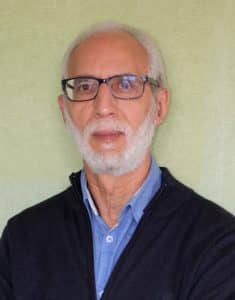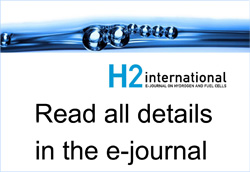In the 1960s and 1970s, France’s industry and research departments used to be very proactive in fuel cell development. Then, 1974 came to pass and with it the slogan of “all-electric, all-nuclear” (tout-éléctrique, tout-nucléaire). The number of fuel cell projects fell drastically and remained at its low level until about the end of the 1990s. In the meantime, a great many subsidies have gone into nuclear industry developments: Billions were and are being spent through CEA (Commissariat à l’Énergie Atomique) in this field. Ironically, the resuscitation of fuel cell development was also CEA- financed, and this still plays an important role.
France is a country of big corporations and small enterprises – the nation’s SMEs hardly come in medium size. This is true for the H2 and fuel cell industry as well. With the exception of a few companies (e.g., McPhy), many market actors are too small (and sometimes underfunded) to become global players. Pragma Industries, Symbio FCell, Mahytec, Ataway, etc. all have fewer than 50 staff, some even fewer than 10. Larger organizations (Air Liquide, Areva) have severely reduced their activities in the fuel cell market (Axane, Helion). There is usually little exchange between France’s universities and the fuel cell industry, something that can be observed in many other French industries too.
Associations like AFHYPAC are comparably active, but they have little influence over whether or not to commercialize pilot projects. Ambitious national or European programs have little or no chance to create a sustainable dynamism after they run out.
One of the reasons for the current situation is what people in France call “colbertisme” (Colbert was finance and economy minister under Ludwig XIV., and he was the first to promote the national industry with support from and under the control of the king). It describes a way of thinking that is still common among France’s political class today: La Grande Nation only takes note of large corporations, where the government can exert influence (EDF, Areva, Alstom, etc.). National programs – for example, Nouvelle France Industrielle by Arnaud Montebourg – have a short lifespan and are altered or halted when the name of the minister at the helm changes.
Missing H2 and fuel cell infrastructure
Any hope for change?
…
This article complements the report by Alexandra Huss found in the January 2016 issue of HZwei (France’s Own Energy Transformation).
Author: Méziane Boudellal
His next book about power-to-gas will be available this summer – and will also be published under Dunod.




























Well… Even if some of the ideas of this article are true, this contains also quite a few German “clichés” about France…
1) First of all, noboby talks anymore about the “Grande Nation” (neither in France, nor abroad) except in Germany.
2) The difficulties of the French industry in H2 and fuel cells are real, but not much more than the other European countries, including Germany: ask small companies like Heliocentris, Sunfire etc. how they are doing… Concerning the big German groups, they are very good…. at selling japanese products ! (Baxi, Viessmann, BMW…)
3) Regarding mobility, the captive fleet + range extender concept developed in France is not that bad: already about ~150 vehicles have been sold in Europe, and this is the only existing European H2 mobility solution existing so far. In the meanwhile, the CEO of Daimler has been sending contradictory messages about their strategy and Audi and BMW have not doing much better.
4) The author does not seem to be aware of the growing involvement of some French main players in hydrogen technologies (Alstom, DCNS, Plastic Omnium, Faurecia…)
Conclusion: Instead of looking at the problems of the European neighbors, we should much better realise that we will all die from the Asian concurrence if we don’t finally start to work together. A few suggestions:
a) put dual pressure H2 stations (350 AND 700 bar) on the main corridors in Europe, including France AND Germany
b) create French-German joint ventures on a few strategic technologies : PEM electrolysis, SOEC-SOFC technologies, Fuel Cell manufacturing, hydrogen compressors, high pressure tanks… What is working well for Airbus can also work for hydrogen
c) force collaboration and exchanges between the main French-German R&D players (Fraunhofer ISE, CEA Liten, ZSW, UTBM-FCLab …)
d) include hydrogen into a real, serious, French-German energy transition roadmap
Best regards,
MW